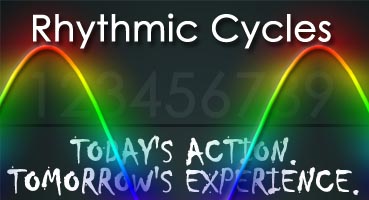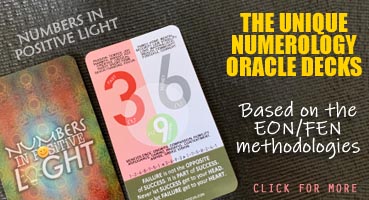VR Human Behavioural Profiling
Virtual Reality is more than just about gaming. It opens many new possibilities and immersed experience, be they for fun, learning, meditating, health, or medicine. We can use VR technology for Human Behavioural and psychological profiling too.
I was given a Google Cardboard unit when I attended the “Google I/O” event in Singapore last year. I installed the VR demos and walkthroughs and enjoyed the virtual experience. Being a Techno-geek, I also wanted to experience the immerse difference between a consumer VR headset and the Google Cardboard. Just last month in January this year, I bought the Samsung Gear VR unit. I’m happy Samsung marketed the product for consumer awareness rather than for huge profits. And I’m glad I bought it, and enjoyed different virtual experience with the two VR products.
 I look forward to the day when we can use the VR technology for Human Behavioural Profiling (HBP). Imagine having less stress on your brain cells to think, or fewer times to check your reference notes to identify tendency traits of a person. Simply put on your VR headset, and launch the HBP software. Then enter the birth date from a Bluetooth controller or through your head movement (up, down, left, right) to navigate the menu options. You are now standing on a virtual stage, and can look at surrounding areas (directions or positions) from a 1st-person or 3rd-person perspective. As you turn around, gazing left and right, and/or up and down, you noticed many profiling rooms indicating various possible traits and energies. You can enter any room and experience its “environmental” effects on you. Imagine seeing yourself transformed (as a 1st-person), or knowing how the imposing energies and traits’ tendencies could affect you (from a 2nd-person view), or understanding the influencing effects and transformations from another person’s view (from 3rd-person perspective). Yes, Virtual Reality technology is finally here, and opens new possibilities in the way we analyse a person, whether we use it for HBP, Body Language, Transactional Analysis, Character Building, or for Face Reading profiling. Until then, let’s look at how we can analyse a person better using today’s readily available profiling methods.
I look forward to the day when we can use the VR technology for Human Behavioural Profiling (HBP). Imagine having less stress on your brain cells to think, or fewer times to check your reference notes to identify tendency traits of a person. Simply put on your VR headset, and launch the HBP software. Then enter the birth date from a Bluetooth controller or through your head movement (up, down, left, right) to navigate the menu options. You are now standing on a virtual stage, and can look at surrounding areas (directions or positions) from a 1st-person or 3rd-person perspective. As you turn around, gazing left and right, and/or up and down, you noticed many profiling rooms indicating various possible traits and energies. You can enter any room and experience its “environmental” effects on you. Imagine seeing yourself transformed (as a 1st-person), or knowing how the imposing energies and traits’ tendencies could affect you (from a 2nd-person view), or understanding the influencing effects and transformations from another person’s view (from 3rd-person perspective). Yes, Virtual Reality technology is finally here, and opens new possibilities in the way we analyse a person, whether we use it for HBP, Body Language, Transactional Analysis, Character Building, or for Face Reading profiling. Until then, let’s look at how we can analyse a person better using today’s readily available profiling methods.
In retrospect, I could relate my visualisation technique to similar VR approach, except that I’m wearing the ‘invisible‘ VR headset and sharing my pseudo–VR experience with you. Many of you would learn from me through a 2nd-person or 3rd-person view, although some of you who’d faced the symptoms before could relate the signs from a 1st-person perspective.
 Besides understanding the keywords and extended correlations among the traits to the numbers and patterns, it is equally important to understand the Essence of the Five Elements principles, its applications, and its potential effects on you. For example, you might have learned from someone else you can conclude the 8-8 pattern with divorce signs, and you’re not taught to analyse from a ‘cause-effect’ approach. Hence, some of you’d assumed patterns like 8-8 and 8-4-3 (and 4-8-3) are all about separations and divorce cases. That, sad to say, is not usually the case in real life. A person with the 8-8 pattern, especially in locations’ MN of their birth chart or Personal Year chart, would not absolutely be separated or divorced in their living years. You need to understand the fiery tempers and stressing moments associated with the number 8. You need to understand the financial management and responsibilities associated with the number 8. And you also need to extend your views and analyse how you can work smart and not hard along the journey towards your various life destinations. Most importantly, you need to know and be aware there are many options you can choose to decide how you want to feel and experience when you reached your next life destination. What this means is that separation (from your spouse) or divorce is not the only route you have to go through in this life destiny of yours. It’s the nearest and easiest side road you can exit if you listen and let other people decide your action. Eventually, you might end up being a divorcee when you reached your next destination.
Besides understanding the keywords and extended correlations among the traits to the numbers and patterns, it is equally important to understand the Essence of the Five Elements principles, its applications, and its potential effects on you. For example, you might have learned from someone else you can conclude the 8-8 pattern with divorce signs, and you’re not taught to analyse from a ‘cause-effect’ approach. Hence, some of you’d assumed patterns like 8-8 and 8-4-3 (and 4-8-3) are all about separations and divorce cases. That, sad to say, is not usually the case in real life. A person with the 8-8 pattern, especially in locations’ MN of their birth chart or Personal Year chart, would not absolutely be separated or divorced in their living years. You need to understand the fiery tempers and stressing moments associated with the number 8. You need to understand the financial management and responsibilities associated with the number 8. And you also need to extend your views and analyse how you can work smart and not hard along the journey towards your various life destinations. Most importantly, you need to know and be aware there are many options you can choose to decide how you want to feel and experience when you reached your next life destination. What this means is that separation (from your spouse) or divorce is not the only route you have to go through in this life destiny of yours. It’s the nearest and easiest side road you can exit if you listen and let other people decide your action. Eventually, you might end up being a divorcee when you reached your next destination.
 Now, if only you take charge and control your life purpose. You can do that easily on your own, without empowering others to decide for you. If you can do that, you will discover there are so many side roads further ahead you can take to experience different moments of your time before you reach your next destination. Sure, you will reach the same destination, but the experience varies. Your journey along the way is different and can be enlightening. You might end up being a changed person, and could have rekindled your love with your spouse. The reason – as you exited to a different side road ahead, you’d made your own choice to change. Along the way to your next destination, you realised there is so much to talk and confide to your spouse. You noted the things both likes and dislikes, the feelings on each other, and the frustrations. Soon, you learned to tolerate, listen, appreciate, understand, and love each other better. And when you finally reach your next destination together, you realised you are back with your spouse as lovely couples, just like the good old times when you first met your spouse; the magical charms, the lovely sparks, the sweet moments, and the endless hours of chatting and irrelevant gossiping with each other.
Now, if only you take charge and control your life purpose. You can do that easily on your own, without empowering others to decide for you. If you can do that, you will discover there are so many side roads further ahead you can take to experience different moments of your time before you reach your next destination. Sure, you will reach the same destination, but the experience varies. Your journey along the way is different and can be enlightening. You might end up being a changed person, and could have rekindled your love with your spouse. The reason – as you exited to a different side road ahead, you’d made your own choice to change. Along the way to your next destination, you realised there is so much to talk and confide to your spouse. You noted the things both likes and dislikes, the feelings on each other, and the frustrations. Soon, you learned to tolerate, listen, appreciate, understand, and love each other better. And when you finally reach your next destination together, you realised you are back with your spouse as lovely couples, just like the good old times when you first met your spouse; the magical charms, the lovely sparks, the sweet moments, and the endless hours of chatting and irrelevant gossiping with each other.
 The number pattern 8-8 is not the only number we can associate with divorce, or even bipolar disorder or domestic violence. We can associate any number sequence, as a matter of fact, to these unfortunate outcomes. The point I want to make is, the 8-8 or whatever number patterns your trainer might have shared with you is based on one absolute and focused aspect of the worst scenario or extreme case. Eventually number patterns like 5-7-3 (or 7-5-3), 2-7-9 (or 7-2-9), 3-6-9 (or 6-3-9), 1-2-3 (or 2-1-3), 9-6-6 (or 6-9-6), and 9-9-9 can also lead to separations, divorces, bipolar disorders, domestic violence, or mental breakdowns.
The number pattern 8-8 is not the only number we can associate with divorce, or even bipolar disorder or domestic violence. We can associate any number sequence, as a matter of fact, to these unfortunate outcomes. The point I want to make is, the 8-8 or whatever number patterns your trainer might have shared with you is based on one absolute and focused aspect of the worst scenario or extreme case. Eventually number patterns like 5-7-3 (or 7-5-3), 2-7-9 (or 7-2-9), 3-6-9 (or 6-3-9), 1-2-3 (or 2-1-3), 9-6-6 (or 6-9-6), and 9-9-9 can also lead to separations, divorces, bipolar disorders, domestic violence, or mental breakdowns.
Learn from me to analyse the numbers and its Elemental Essence from a pseudo–VR perspective. Understand there are many contributing factors that might influence a person. And be aware and mindful the eventual effect on the person is not absolute like 1+1=2; it can be anything else because of the person’s past histories, experiences, family and social values, beliefs and habits. Sure enough, you might be right for many case studies you did, but it’s different for most, if not all case studies you’d analysed. Know where these differences might be, and understand its potential impact when you’re in my classes. With regular practices and “after-class” continuing group discussions, you can build up a better profiling knowledge and be a more confident person.
Regards, Ron WZ Sun















